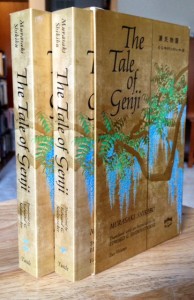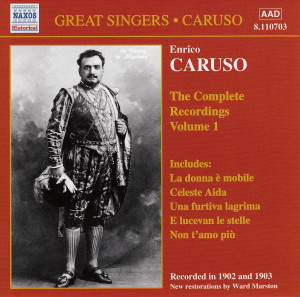 Today marks the first day of Year Two of my three-year exploration of the world’s greatest creative achievements.
Today marks the first day of Year Two of my three-year exploration of the world’s greatest creative achievements.
I begin Year Two by reading the two-volume edition of The Tale of Genji, which was written in the early part of the 11th century.
According to its entry on Wikipedia:
The Tale of Genji is a classic work of Japanese literature written by the noblewoman and lady-in-waiting Murasaki Shikibu in the early years of the 11th century, around the peak of the Heian period. It’s sometimes called the world’s first novel, the first modern novel, the first psychological novel or the first novel still to be considered a classic. Notably, the novel also illustrates a unique depiction of the livelihoods of high courtiers during the Heian period. While universally considered a masterpiece, its precise classification and influence in both Western and Eastern canon has been a matter of debate.
The first partial translation of Genji Monogatari into English was by Suematsu Kenchō, published in 1882. Arthur Waley published a six-volume translation of all but one chapter, with the first volume published in 1921 and the last in 1933. In 1976, Edward Seidensticker published the first complete translation into English, made using a self-consciously “stricter” approach with regards to content if not form. The most recent English translation was published in 2001 by Royall Tyler and aims at fidelity in content and form to the original text.
The edition I bought is the Edward Seidensticker translation. I Googled The Tale of Genji and, from what I read, it seemed a lot of people thought the Edward Seidensticker edition was the best one. Granted, “best” – when it comes to translations – is in the eye of the beholder. It’s not likely a translation of any kind will please everyone. This one seems to have its share of detractors, too. But, in general, this translation seems to be respected.
What is The Tale of Genji about? Again, from its entry on Wiki:
The work recounts the life of Hikaru Genji, or “Shining Genji”, the son of an ancient Japanese emperor, known to readers as Emperor Kiritsubo, and a low-ranking but beloved concubine called Lady Kiritsubo. For political reasons, the emperor removes Genji from the line of succession, demoting him to a commoner by giving him the surname Minamoto, and he pursues a career as an imperial officer. The tale concentrates on Genji’s romantic life and describes the customs of the aristocratic society of the time.
Genji’s mother dies when he is three years old, and the Emperor cannot forget her. The Emperor Kiritsubo then hears of a woman (Lady Fujitsubo), formerly a princess of the preceding emperor, who resembles his deceased concubine, and later she becomes one of his wives. Genji loves her first as a stepmother, but later as a woman, and they fall in love with each other. Genji is frustrated by his forbidden love for the Lady Fujitsubo and is on bad terms with his wife (Aoi no Ue). He engages in a series of unfulfilling love affairs with other women, but in most cases his advances are rebuffed, his lover dies suddenly during the affair, or he becomes bored with his lover.
Genji visits Kitayama, the northern rural hilly area of Kyoto, where he finds a beautiful ten-year-old girl. He is fascinated by this little girl (Murasaki), and discovers that she is a niece of the Lady Fujitsubo. Finally he kidnaps her, brings her to his own palace and educates her to be his ideal lady — that is, like the Lady Fujitsubo.
Given the size of the novel – it plays out over many, many pages – I wanted to find an edition that was both easy to hold, as well as easy on the eyes. This two-volume edition fits the bill. Just. The size of the type is kind of small. But it’ll suffice.
The font size is the least of my worries.
It’s hard to read a book during these explorations. There’s something to be said about having an “assignment” every day. Listening to CDs provides the discipline necessary to blog on a daily basis.
But reading…?
It’s more difficult to blog regularly, let alone every day, about reading a book.
I’ll see how it goes.
 In addition to reading The Tale of Genji, I’m listening to CD 1 from the remarkable Enrico Caruso: The Complete Recordings box set released by the equally remarkable Naxos Classical music label.
In addition to reading The Tale of Genji, I’m listening to CD 1 from the remarkable Enrico Caruso: The Complete Recordings box set released by the equally remarkable Naxos Classical music label.
You can buy the Caruso box set here.
If you’re a fan of old recordings (these are over 100 years old!), brilliant singers (Caruso is still touted as one of the – if not THE – best), or experiencing a piece of history (I love hearing what audiences a century ago heard), this box set is for you.
I listened to Caruso CD 1 today. It’s over 70 minutes in length. And it’s rough. I haven’t yet read the liner notes (I’ll save those for later), but my guess is these were originally acetate recordings. They sound it.
But, O, what an experience! To listen to something that was performed, live, over a century ago is makes me feel all tingly inside.
I’ll write about what I heard, the liner notes, and my initial thoughts on Genji tomorrow.
This is enough for today.
